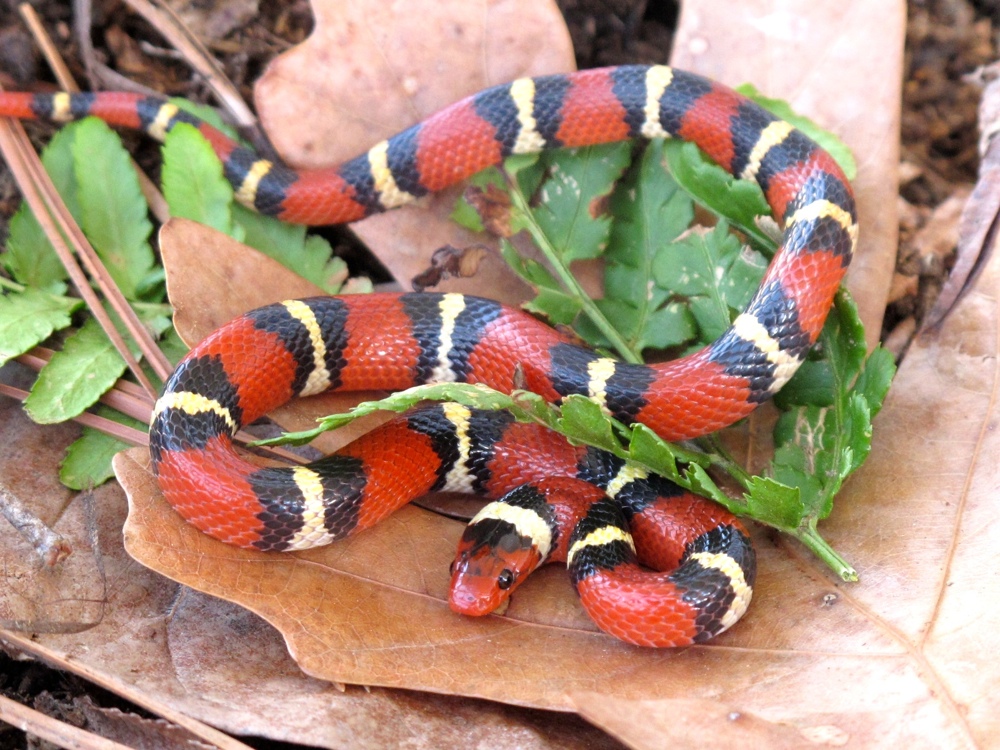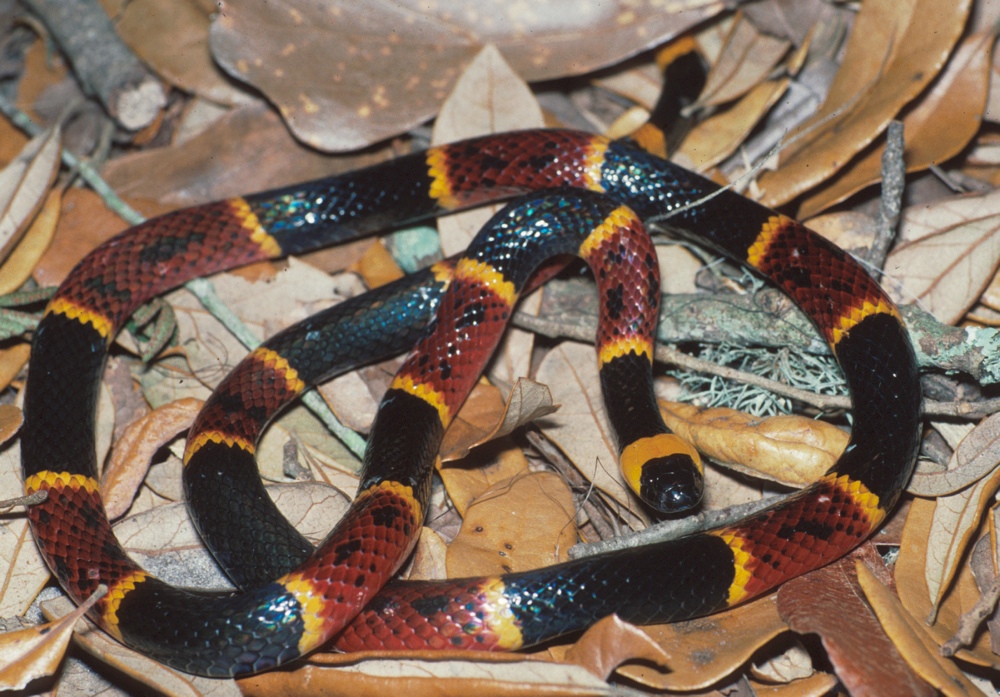Weird Case of Look-Alike Snakes Surprises Researchers

The recent extinctionof a lethal snake in the North Carolina Sandhills has led a harmless serpent that lives there to mimic the deadly snake, researchers say.
This finding surprised researchers, who had expected that the harmless snake would evolve to look less like the extinct snake, since mimicking an extinct animal wouldn't provide any survival advantage.
The animal kingdom is full of examples of harmless creatures evolving to mimic fierce beasts in order to ward off predators — a strategy known as Batesian mimicry. For instance, hoverflies both look and sound like more dangerous wasps and bees.
Another example of a Batesian mimic is the scarlet kingsnake, a nonvenomous serpent that resembles the venomous coral snake. Coral snakes are colored in repeating patterns of black, yellow, red and yellow rings; the red rings are surrounded by yellow rings. In contrast, scarlet kingsnakes are colored in repeating patterns of red, black, yellow and black rings; the red rings are surrounded by black rings. [See Stunning Photos of Snakes of the World]
Both snake species live in the southeastern United States, although the scarlet kingsnake also dwells farther north. Experiments have shown that predators avoid plastic replicas of the scarlet kingsnake in areas where coral snakes also live, but not in places farther north, where the venomous reptiles do not live.

Coral snakes once lived as far north as the North Carolina Sandhills, a region of gently rolling, sand-covered hills covering about 1,500 square miles (3,900 square kilometers). However, no specimens of this serpent have been collected there since 1960 — scientists are unsure why they apparently went extinct there. By contrast, scarlet kingsnakes are common there.
How kingsnakes change their look
Sign up for the Live Science daily newsletter now
Get the world’s most fascinating discoveries delivered straight to your inbox.
Evolutionary theory predicts that once the harmful animal being copied goes extinct, there is no longer any benefit that the mimic gets from imitation, and in turn, this mimicry should fade away over time. To see if scarlet kingsnakes did, indeed, change once the venomous coral snake they copied was gone, the researchers compared five specimens of coral snake collected before 1960 with 27 specimens of scarlet kingsnakes collected in the 50 years after the coral snake disappeared from the North Carolina Sandhills.
The scientists measured the width of each ring, calculating the proportions of red and black.
"When we embarked on this study, I thought that we would most likely find no change," said study co-author David Pfennig, an evolutionary ecologist at the University of North Carolina."After all, only about 50 years had transpired since coral snakes went extinct in this population — that's about 15 to 20 snake generations. However, if we were to find any change at all, I thought we would see the breakdown of the mimetic pattern in these populations."
They unexpectedly found that scarlet kingsnakes became more similar to coral snakes in their color patterns over time following the apparent elimination of the venomous serpent from the North Carolina Sandhills. Specifically, the amount of red and black became more similar. [7 Shocking Snake Stories]
"To me, it's always exciting in science when you get results that you did not expect — it means there is the potential to come up with a new idea and discover something new," Pfennig told Live Science.
In retrospect, "if we had thought hard about this problem at the outset, I believe we could have predicted the observed outcome," Pfennig said.
Why mimicry increased
Consider a population of harmless scarlet kingsnakes that are surrounded by lots of deadly coral snakes. In this scenario, predators would naturally want to avoid both the deadly and harmless serpents, because the chance of encountering the dangerous snake would be very high. That would mean even bad mimics of coral snakes would benefit.
However, when coral snake populations decline, there is less chance that predators would encounter the lethal serpents, meaning bad mimics of coral snakes would likely get culled, leaving good mimics behind.
"In areas such as the Carolina Sandhills, where coral snakes have been historically rare, there has been, and still is, strong selection for precise mimicry," Pfennig said. "This selection continues to act, even after the coral snakes have gone completely extinct, presumably because there have not been enough generations of predators to cause a reversal in the avoidance of things that look like coral snakes, and because the fitness consequences to the predators of avoiding coral snakes — and, therefore, also their precise mimics — has been historically strong."
However, the researchers do not expect scarlet kingsnakes to benefit from this "evolutionary momentum" forever. "Over time, we think that mimicry will, indeed, begin to break down," Pfennig said. "We want to keep doing these experiments to see when selection begins to change in direction."
Most likely, the single most important factor in determining when the kingsnakes will start to evolve to look less like the coral snakes is how desperate the predators in the area become, the researchers said.
"If we go through a period when predators become more desperate for food — say, during a drought — then we might expect selection to more strongly favor those individuals in the predator population that have broader prey preferences and, thus, are more willing to attack the mimics," Pfennig said. "This would possibly cause the pattern to break down rapidly."
Pfennig and his colleague Chris Akcali detail their findings online June 11 in the journal Biology Letters.
Follow us @livescience, Facebook & Google+. Original article on Live Science.










